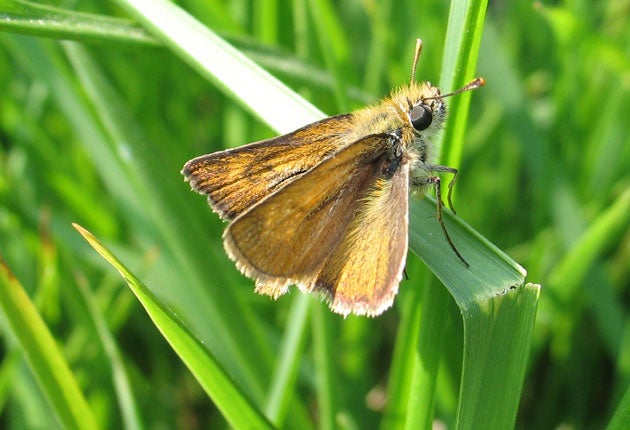Warm spring brings bumper year for Britain's butterflies

Your support helps us to tell the story
From reproductive rights to climate change to Big Tech, The Independent is on the ground when the story is developing. Whether it's investigating the financials of Elon Musk's pro-Trump PAC or producing our latest documentary, 'The A Word', which shines a light on the American women fighting for reproductive rights, we know how important it is to parse out the facts from the messaging.
At such a critical moment in US history, we need reporters on the ground. Your donation allows us to keep sending journalists to speak to both sides of the story.
The Independent is trusted by Americans across the entire political spectrum. And unlike many other quality news outlets, we choose not to lock Americans out of our reporting and analysis with paywalls. We believe quality journalism should be available to everyone, paid for by those who can afford it.
Your support makes all the difference.British butterflies are expected in spectacular abundance this year, with more than a quarter of all species native to the isles having made their earliest recorded appearances as a result of the warmest spring for 351 years.
Fifteen British butterfly types have appeared weeks before they would have done a decade ago, with conservationists already comparing 2011 to 1893, a landmark for early sightings of the insects.
Of the 59 resident and regular migrant species, 53 have been seen, an occurence called "exceptional" by Butterfly Conservation's chief executive Martin Warren.
One of the smallest butterflies, the orange Lulworth Skipper, was spotted on 28 April in south Dorset, seven weeks before expected and the earliest since records began. The Small Copper, bright copper with brown spots, and an occasional visitor to gardens in May, was seen on 9 March in Lincolnshire, six weeks earlier than normal and two-and-a-half weeks ahead of its previous record in 2007.
The rare round-edged Wood White, usually found in woodland glades by the end of May, emerged in the third week of April in Shropshire and Sussex five weeks early.
The Dingy Skipper, Grizzled Skipper, Brimstone, Green-veined White, Orange-tip, Black Hairstreak, Duke of Bergundy, White Admiral, Pearl-bordered Fritillary, High Brown Fritillary, Dark Green Fritillary and Silver-washed Fritillary all appeared on average three weeks before they did in the 1990s, according to records.
For Dr Warren, the trend is "almost certainly" linked to rising temperatures. "Some butterflies are spreading north due to climate change, which is fantastic, as we are seeing beautiful butterflies, like the Speckled Wood and Orange-tip, which we didn't see 20 or 30 years ago, in Scotland."
But Matthew Oates, naturalist for the National Trust, warned: "Some of these species are coming out before their nectar sources are present, so will the food available be suitable and will there be anything for the caterpillars to eat?"
Join our commenting forum
Join thought-provoking conversations, follow other Independent readers and see their replies
Comments